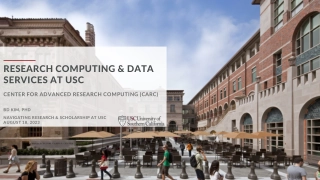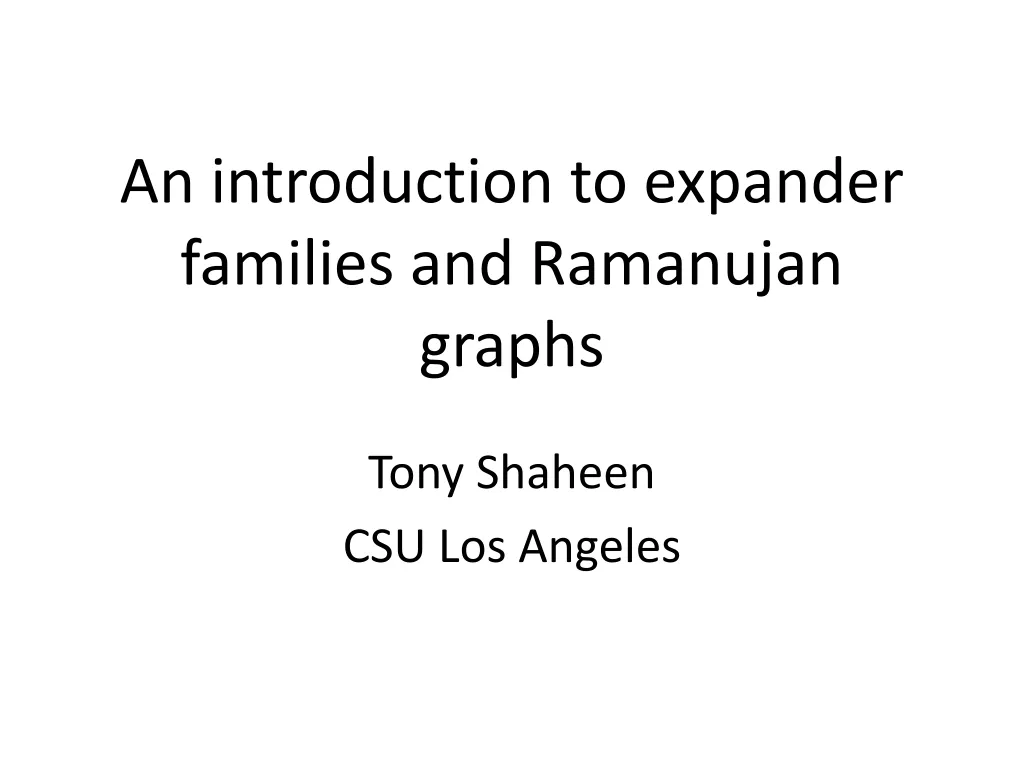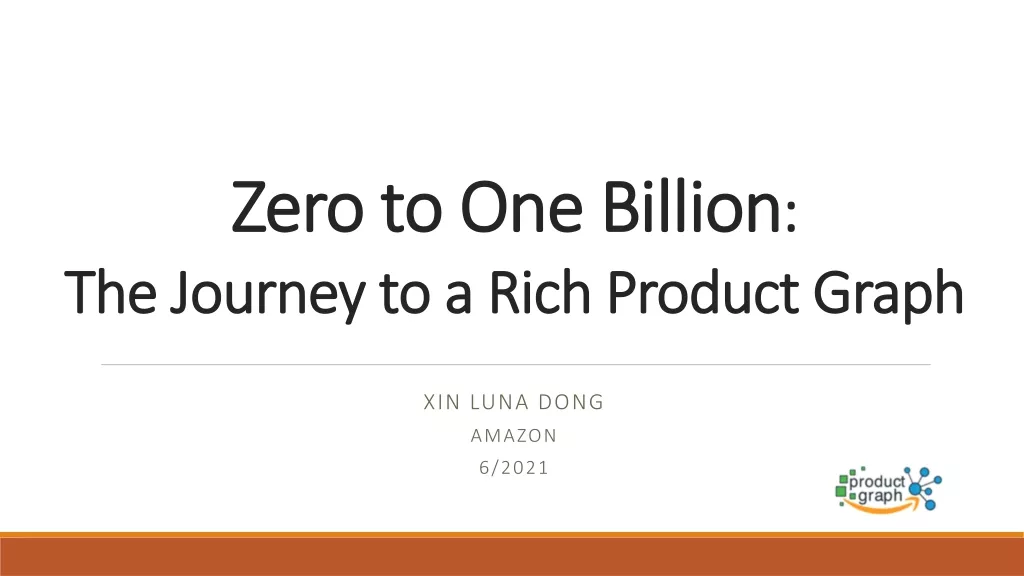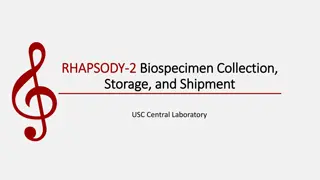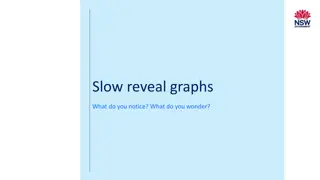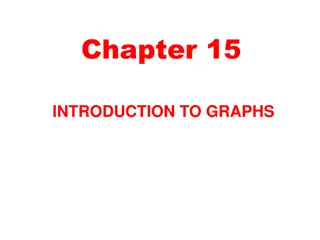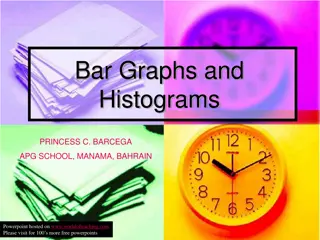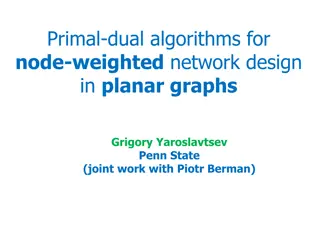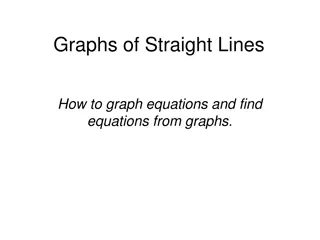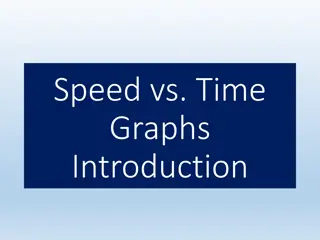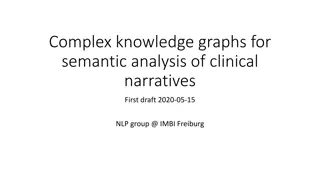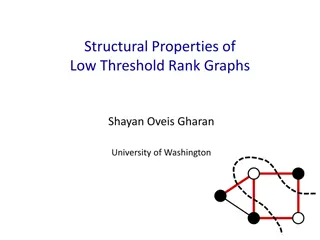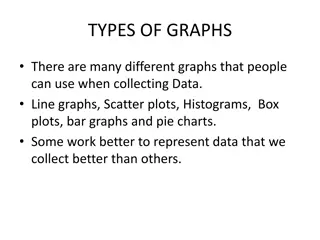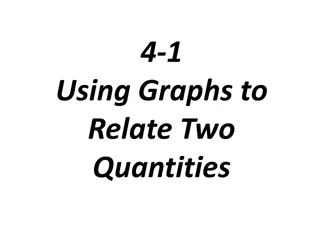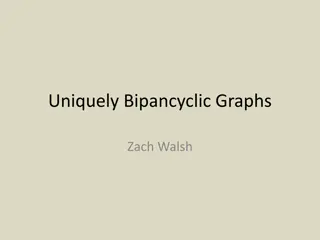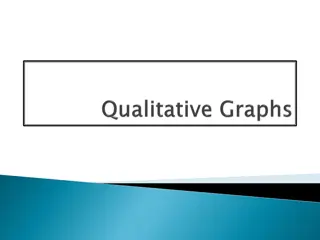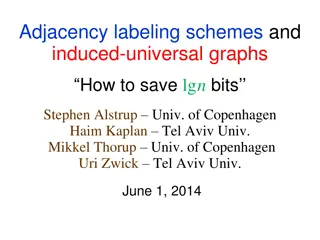
Enhancing Mission Relevance Through Knowledge Graphs at USC
Discover how Knowledge Graphs research at USC, led by Professor Craig Knoblock, aims to identify and quantify relationships between entities to enhance mission relevance. The proposed solution involves creating a comprehensive knowledge graph to organize entities, classes, and facts for operational contexts effectively.
Download Presentation

Please find below an Image/Link to download the presentation.
The content on the website is provided AS IS for your information and personal use only. It may not be sold, licensed, or shared on other websites without obtaining consent from the author. If you encounter any issues during the download, it is possible that the publisher has removed the file from their server.
You are allowed to download the files provided on this website for personal or commercial use, subject to the condition that they are used lawfully. All files are the property of their respective owners.
The content on the website is provided AS IS for your information and personal use only. It may not be sold, licensed, or shared on other websites without obtaining consent from the author.
E N D
Presentation Transcript
Knowledge Graphs Research at USC Knowledge Graphs Research at USC By Professor Craig By Professor Craig Knoblock http://usc http://usc- -isi isi- -i2.github.io/home/ i2.github.io/home/ Knoblock 2
Problem Statement Problem Statement It is vital to identify relationships between entities involved in the mission including users, cyber (autonomous and dependent) distributed systems, services, and clients in order to identify mission relevance. Each entity should be profiled through their activities and interactions with other environment. In order to quantify mission relevance with given entities and mission profile, we need a proper network representation of entity profiles (roles, attributes, authentications, etc.) and their relationship with regards to other entities. Each relation needs to represent a unique and generic character of one or more entities in the network. entities and operational 3
Proposed Solution Proposed Solution We propose a solution through knowledge graphs a comprehensive and semantically organized machine-readable collection of relevant to operational context or mission- specific entities, classes, and facts (such as relationships, attributes, etc.). We can introduce spatial and temporal dimensions, commonsense properties and rules, and context of entities and facts to the knowledge graphs to enhance learning. We include ontological learning to further classify the hierarchies of classes, class definitions, and the subsumption relation. The PROV Ontology (PROV-O) expresses the PROV Data Model using the OWL2 Web Ontology Language (OWL2). It provides a set of classes, properties, and restrictions that can be used to represent and interchange provenance information generated in different systems and under different contexts. It can also be specialized to create new classes and properties to model provenance information for different applications and domains. http://www.w3.org/ns/prov#. 4
Solution Overview Solution Overview Knowledge Graph 5 Created from YAGO3: https://gate.d5.mpi-inf.mpg.de/webyago3spotlxComp/SvgBrowser/
Solution Overview Solution Overview Knowledge Graph (One Relation Expanded) 6 Created from YAGO3: https://gate.d5.mpi-inf.mpg.de/webyago3spotlxComp/SvgBrowser/
Benefits of the Approach Benefits of the Approach Knowledge graphs can interconnect several tables with individual attributes as relations with entities. Complex networks can be easily understood by traversing through relations (edges) and nodes (entities). Through taxonomy and ontological themes mission-relevant information can be represented with confidence value. Knowledge base is an ontology that is anchored in time and space. It attaches a temporal dimension and a spacial dimension to many of its facts and entities. 7
Solution Details Solution Details Knowledge Graph or Base: In a knowledge graph, entities will be nodes with their detailed profiles and connected through edges (relationships) to other entities. Each relationship can be expanded to get all the entities with that particular relationship: for example, NGC: node linksTo: (edge) relationship is expanded to reveal other entities (next slide). We will annotate every relation with confidence value. We will combine taxonomy with ontological themes such as type of missions and their relevance to other entities. 8
Solution Details Solution Details Knowledge Graphs and Ontologies: An ontology encompasses a representation, formal naming, and definition of the categories, properties, and relations between the concepts, data, and entities that substantiate one, many, or all domains. Ontology refers to both a theory of a modeled world and a component of knowledge-based systems. An ontology is a description (like a formal specification of a program) of the concepts and relationships that can formally exist for an agent or a community of agents. Ontologies are often equated with taxonomic hierarchies of classes, class definitions, and the subsumption relation, but ontologies need not be limited to these forms. Every field creates ontologies to limit complexity and organize information into data and knowledge. As new ontologies are made, their use hopefully improves problem solving within that domain. 9
Solution Details Solution Details Components of Ontologies: Individual Users (Analysts) Instances or objects (the basic or "ground level" objects) Classes Sets, collections, concepts, classes in programming, types of objects, or kinds of things Attributes Aspects, properties, features, characteristics, or parameters that objects (and classes) can have Relations Ways in which classes and individuals can be related to one another Function terms Complex structures formed from certain relations that can be used in place of an individual term in a statement 10
Solution Details Solution Details DIG Tool for Knowledge Graphs: Knowledge is contained in time series data. Need to make it accessible and interpretable. Need to automatically extract useful data into a knowledge graph DIG at USC-ISI builds on rich models of a domain that support fine-grained data collection, organization, and analysis. DIG builds a graph of the entities and relationships within a domain using scalable extraction and linking technologies. DIG also includes a faceted content search interface for users to query DIGs and visualize information on maps, http://usc-isi-i2.github.io/knoblock/ timelines, and tables: 11
Solution Details Solution Details Karma Tool for Knowledge Graphs Karma is an information integration tool that enables users to quickly and easily integrate data from a variety of data sources including databases, spreadsheets, delimited text files, XML, JSON, KML and Web APIs. Karma learns to recognize the mapping of data to ontology classes and then uses the ontology to propose a model that ties together these classes. Users then interact with the system to adjust the automatically generated model. During this process, users can transform the data as needed to normalize data expressed in different formats and to restructure it. https://www.isi.edu/integration/papers/knoblock12-eswc.pdf 12
Datasets Datasets Global Database of Events, Language, and Tone (GDELT Project) monitors the world's broadcast, print, and web news from nearly every corner of every country in over 100 languages and identifies the people, locations, organizations, counts, themes, sources, and events driving our global society every second of every day, creating a free open platform for computing on the entire world. https://catalog.data.gov/dataset/global-database-of-events- language-and-tone-gdelt-project YOGO Ontology: https://www.mpi-inf.mpg.de/departments/databases-and- information-systems/research/yago-naga/yago/downloads/ 13
Research Tasks Research Tasks Generate synthetic data to simulate user profiles through NGC WaxedPrune prototype. Identify facts, relationships, attributes, and mission plans through datasets and develop mission relevant rules and structures. Define confidence values to each relationship between entities. Design an human computer interaction model for analysts to provide feedback to the system. Collaboration with Neta Ezer. 14

